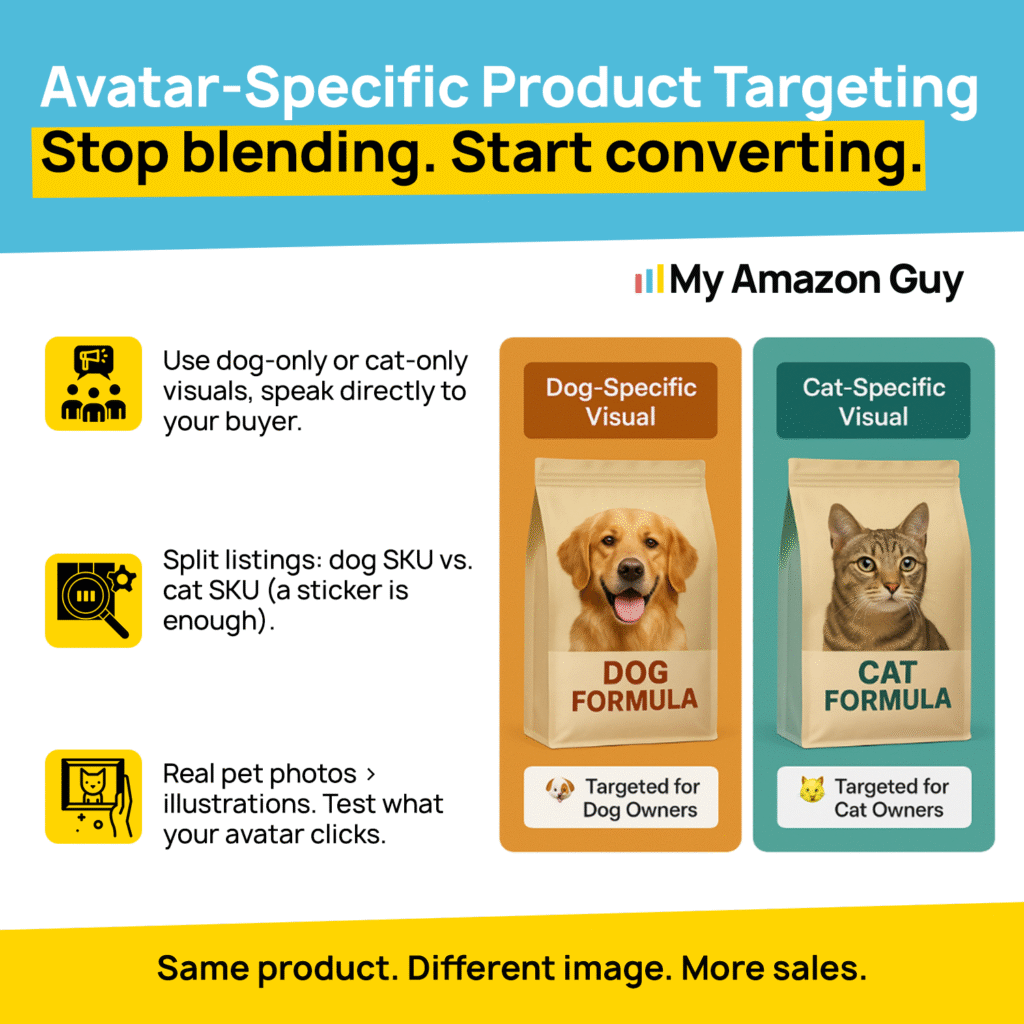
Are you making the most out of your ads, or just throwing money at them, hoping they’ll magically boost your sales? Following the right Amazon advertising management tips can be the difference between wasted spend and steady profit.
Amazon ads are one of the best ways to get more shoppers to click on your listings and buy your products. That’s why having a smart, data-driven approach to ad management is non-negotiable for sellers who want to scale.
But when you don’t manage your ads properly, you end up paying for clicks that don’t convert or campaigns that don’t align with your goals. This not only eats up your budget but can also hurt your product ranking and long-term profitability.
In this article, our Amazon agency will share practical advertising management tips to help sellers increase clicks, sales, and brand visibility on Amazon. We’ll also cover strategies to optimize campaigns, track performance, and avoid wasted ad spend for more profitable results.
Table of Contents
Maximize Your Ad Performance
Learn how to turn every click into a potential sale with smart Amazon ad strategies.
Importance of Having Effective Amazon Advertising Management
Around 73% of online shoppers click on Amazon product ads while browsing, showing just how powerful PPC can be in capturing shopper attention. That’s why most Amazon sellers invest heavily in ads to get their products seen, even if it means paying a premium for visibility.
However, without proper advertising management, that investment can easily spiral into wasted spend. Managing your ads effectively ensures you reach the right audience, improve conversions, and make every dollar count toward actual sales growth.
10 Proven Amazon Advertising Management Tips
Although there’s no guaranteed formula to make every campaign a success since each brand’s situation is different, there are still best practices that consistently deliver results. That’s why following proven Amazon advertising management tips can help you make smarter decisions, optimize your ad spend, and boost your sales performance.
Tip 1: Know and Set Your Goals
Setting clear advertising goals from the start is crucial because your goals dictate the strategy you’ll follow for your campaigns. Without knowing what you want to achieve, your ad management efforts can become scattered and inefficient.
For example, if your goal is to build brand awareness for a new product, your campaigns should focus on reaching as many relevant shoppers as possible. Success for this type of goal is measured through impressions, click-through rates, and overall audience reach rather than direct sales.
On the other hand, if your goal is to drive sales or conversions, your campaigns should target shoppers actively looking for products like yours. In this case, metrics like sales, ROAS, and ACOS become the benchmarks for success.
Tip 2: Experiment with Different Ad Types
Amazon offers several ad types that sellers can use to reach their goals, including Sponsored Products, Sponsored Brands, and Sponsored Display. Each ad type works differently and can help achieve specific objectives, from driving direct sales to building brand awareness.
Depending on what you want to accomplish, you may need to mix and match ad types to see which performs best for your products. Experimenting allows you to learn which formats and placements bring the most value without wasting budget on underperforming campaigns.
For example, Sponsored Products are ideal for boosting conversions, while Sponsored Brands help increase visibility at the top of search results. By testing multiple ad types, sellers can create a balanced strategy that maximizes both reach and sales while keeping costs under control.
Tip 3: Perform Keyword Research
Effective Amazon advertising starts with smart keyword research, because promoting your products without knowing which terms to target is just throwing money away. Tools like Jungle Scout can help identify high-performing keywords and uncover new opportunities for your campaigns.
If you don’t want to rely on external tools, Amazon’s own features can also provide insights. Automatic campaigns allow you to discover search terms that customers are using, giving you a foundation to build your manual campaigns.
Negative keywords are equally important, as they prevent your ads from showing for irrelevant searches that waste ad spend. After gathering data from auto campaigns, you can add negative exact or phrase matches to refine your targeting and focus your budget on terms that actually convert.
Tip 4: Have an Audience in Mind
Knowing your audience is crucial because understanding how your potential customers behave allows you to tailor your campaigns for better results. While the instinct may be to target everyone, spreading your ads too wide can make it hard for any shopper to feel that your product is relevant to them.
Instead, think about a specific target audience for your ads and create a customer avatar to guide your strategy. This avatar could represent a high-value new customer, a comparison shopper, or someone who abandoned their cart but showed intent to buy.
Focusing your campaigns on these avatars lets you optimize your ad spend for the shoppers most likely to convert. Combining audience targeting with smart bidding ensures you reach the right people without wasting money on clicks that won’t drive sales.
Tip 5: Implement a Smart Bidding Strategy
A smart bidding strategy is essential to getting more clicks and conversions without overspending. For Sponsored Products, using Dynamic Bids – Down Only gives you control by allowing Amazon to lower your bid in real time when a click is less likely to convert, preventing your ACOS from spiraling.
For automatic campaigns, setting bids by targeting group is key. Close Match should have the highest bid, while Loose Match, Substitutes, and Complements receive lower bids based on relevancy, ensuring you don’t waste money on low-converting traffic.
When starting manual campaigns, begin conservatively by bidding 25% to 50% below Amazon’s suggested bid. You can also use placement bid adjustments, like boosting bids for Top of Search, to maximize visibility in high-converting spots without overspending.
Scale Your Amazon Sales Faster
Work with experts who can take your campaigns to the next level and boost ROI.
Tip 6: Use Effective Images and Videos
Visuals play a huge role in purchasing decisions, with 75% of consumers considering images or videos a deciding factor. Using high-quality photos and videos in your ads helps grab attention, showcase your product, and encourage shoppers to click and convert.
Make sure your images clearly highlight the product and its benefits, whether through clean product shots or lifestyle images that show it in real-life scenarios. This helps shoppers quickly understand how your product fits into their lives and why they should choose it.
Video ads are equally powerful, especially short clips that demonstrate your product or tell a story, as they can be used in Sponsored Brands or Sponsored Display campaigns. Start with the benefit within the first few seconds, optimize for silent viewing, and always include your brand logo at the end to reinforce brand identity.
Tip 7: Preparing Ads Before Important Events
Every year, major shopping events like Prime Day, Black Friday, and Cyber Monday drive massive traffic to Amazon. To make the most of these opportunities, sellers should plan their ad strategies early to build momentum and boost sales before deadlines hit.
Start new campaigns at least two weeks ahead so Amazon’s system can gather data and optimize your ads in time for the big day. Make sure your listings are polished, prices are set, and inventory is stocked because having great ads won’t matter if you run out of product mid-event.
As the event approaches, slightly lower your bids to avoid wasting money on window shoppers, but raise your daily budget to stay visible when traffic spikes. During the event itself, focus on retargeting and audience-specific campaigns to capture high-intent shoppers who are most likely to convert.
Tip 8: Advertise Outside Amazon
You don’t have to limit your ads to Amazon. In fact, 76% of consumers have bought a product they saw in a brand’s social media post, which shows how powerful platforms like Facebook, TikTok, and Instagram can be for driving attention and sales.
Use social media to reach potential buyers who aren’t even actively searching for you on Amazon. Create engaging content, such as short videos, lifestyle images, and educational posts, that show how your product fits into real life and solves everyday problems.
You can also partner with influencers, run targeted ads, and track performance through Amazon Attribution to see which channels bring in the most conversions. By bringing traffic from outside Amazon, you’re not just boosting sales, you’re building long-term brand awareness and authority.
Tip 9: Track KPIs
You can’t manage what you don’t measure. Without tracking your key performance indicators (KPIs), there’s no way to know if your ads are working or if you’re just burning through your budget.
Monitoring your KPIs, like ACOS, click-through rate, and conversion rate, helps you spot which campaigns are profitable and which ones are failing. This gives you the data to pause poor performers, adjust bids, or double down on what’s driving real sales.
A good rule of thumb is to keep “wasted ad spend” within 3%–8% of your budget for testing new keywords and campaigns. That small amount of controlled waste is actually healthy; it means you’re experimenting, improving, and staying competitive instead of staying stuck.
Tip 10: Get Professional Help
There are times when managing your Amazon ads on your own can only get you so far. Ad performance issues, wasted budgets, or underperforming campaigns can easily spiral if you don’t have the right data or experience to fix them.
That’s why working with an agency that specializes in Amazon advertising management can be a smart move. These experts know how to audit your campaigns, find what’s holding back your growth, and build a strategy that actually converts.
Getting help doesn’t mean you’ve failed; it means you’re investing in scaling faster and smarter. With professional guidance, you can save time, reduce ad waste, and focus on what really matters: growing your business.
FAQs About Amazon Advertising Management
How often should I review my Amazon ad campaigns?
You should review campaigns at least weekly to track performance, adjust bids, and update keywords. Regular monitoring prevents wasted spend and keeps your ads optimized.
Do I need to use all Amazon ad types at once?
Not necessarily. Focus on the ad types that align with your goals, then experiment gradually to see which drives the best results.
Can I manage Amazon ads effectively without professional help?
Yes, but it requires time, data analysis skills, and experience. Hiring an expert can speed up results and reduce wasted ad spend.
Maximize Your Amazon Ads for Real Results
Amazon advertising offers huge potential to increase clicks, sales, and brand visibility, which is why many sellers rely on it to grow their business. However, without a clear strategy, it’s easy to spend money blindly and see little return on investment.
Understanding the right ad types, keyword strategies, audience targeting, and bidding methods can make the difference between wasted spend and profitable campaigns. By learning these proven Amazon advertising management tips, sellers can optimize their campaigns and get the most value from every ad dollar.
Are you struggling to get your ads to perform? Learn more than just the basics; call our full-service Amazon agency today and take control of your advertising results!
Stop Wasting Your Ad Budget
Discover which campaigns are costing you money and how to optimize them for profit.





